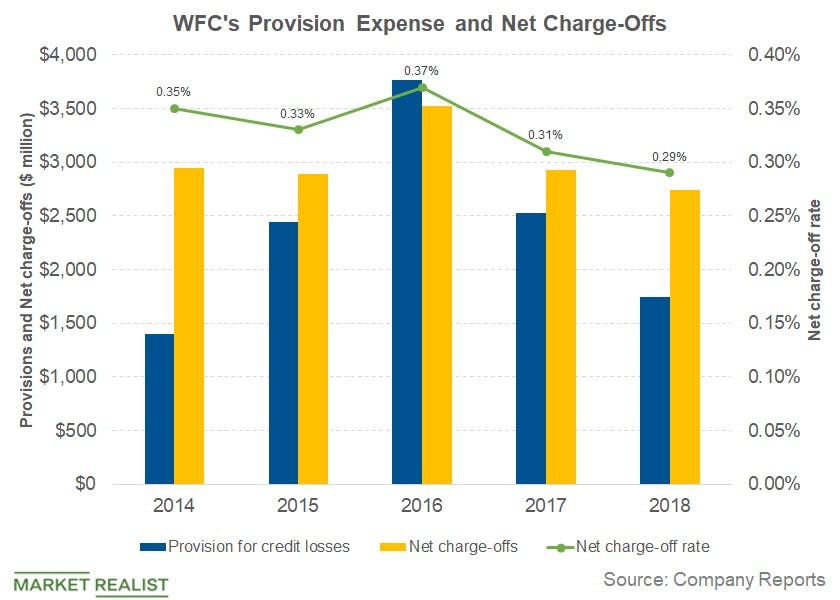Contents:


Fund for all risk profile – Hybrid funds has different category of funds which helps the investor choose one which suits his risk profile. Conservative hybrid funds are suitable for investors who wish to start investing in equity without taking on too much risk. These mutual funds help strike the right balance between capital preservation and market-linked returns. By investing predominantly in equity and setting aside the rest of the portfolio for debt, conservative hybrid mutual funds are best suited for you if you want to get the best of both worlds. When you see how hybrid mutual funds work, you will understand why they offer their investors the best of both worlds.
Wouldn’t that be great if you can invest in multiple asset classes through one fund itself? Investors who are still unsure about their risk profile should consider investing in a balanced hybrid fund. These funds invest in debt and equity securities in roughly the same weightage, as in have an almost equal allocation in each. Sebi defines the fund’s characteristics as those which invest around percent of the assets in each. Historically these funds have provided a return in the range of 7 – 9 % on average. Aggressive Hybrid Fund- This fund will invest around 65 to 85 percent of its total assets in equity-related instruments and about 20 to 35 percent of their assets in debt instruments.
Provides a layer of stability while also providing modest exposure to equity. Hybrid mutual funds, therefore, allow investors to gain the most from equity investments while providing them with a safety net against extreme volatility that arises in the markets. Debt-oriented hybrid funds are suitable for conservative investors looking for a boost in returns with a small exposure to equity. Of course, it is a more circuitous route, and perhaps, that is why hybrid funds came into existence.
What are Hybrid Funds: Know the Meaning, Features & Types of Hybrid Funds
Beginners who do not want to expose themselves 100% to stock market should invest in hybrid mutual funds. Retirees and senior citizens can also invest in hybrid mutual funds giving consistent dividends. These yield higher than real debt funds and are common among conservative investors. Budding investors willing to become exposed to equity markets could invest in hybrid funds.
Fund managers invest more in equity when prices are low and less when prices are on the higher side. This has the advantage of reducing volatility, making this kind of hybrid fund attractive for risk-averse investors. Returns will depend on the skills of the fund manager and his ability to evaluate situations. Another hybrid mutual fund is the arbitrage fund, which takes advantage of price differences between the derivatives and cash segments of the stock market. However, arbitrage opportunities are not available all the time, so to ensure steady returns to investors, these types of hybrid mutual funds place part of their corpus in fixed income instruments.
Hybrid funds offer the investor the benefit of diversification as it invests in a portfolio consisting of multiple asset classes. This can help lower risk as the performance of one asset class is balanced by the performance of another asset class thus stabilising returns. It is a category of mutual funds investing in more than one asset class. These plans typically combine equity and debt, while some also include gold and REITs.
Now if you had invested only in equity funds, you would have missed the rally in gold. But with hybrid funds, you can capture the ups and downs of all asset classes. Keep in mind that SEBI rules required multi asset allocation funds to allocate at least 10 percent of the investment corpus to each of these asset classes. The key philosophies behind hybrid funds are – asset allocation, correlation, and diversification. Multi-Asset Allocation funds are not too common in India but they combine at least 3 asset classes into a single fund.
Value Funds (Strategy and Style Based Funds)
This fund will invest around percent of its total assets in both debt and equity instruments. The beneficial factor of a balanced fund is that they provide equity comparable returns with a lower risk factor. Hybrid Funds are a type of Mutual Funds that act as a combination of equity and Debt fund. Hybrid Mutual Funds allow an investor to invest in both equity and debt markets in certain proportions. The proportion of Mutual Fund investment in these funds is either pre-determined or may vary over a period of time. Hybrid Funds are one of the Best Investment Plan as they not only allow investors to enjoy Capital growth but also get fixed Income at regular intervals.

hybrid fund meaning funds carry an investment risk proportionate to the allocation of assets in its portfolio. Hence, it is important to analyze the portfolio of the scheme carefully to get a good understanding of the risks involved. Each hybrid fund has a different combination of equity and debt targeted at different types of investors. These schemes provide taxation benefits that apply to equity-oriented programmes, thus ensuring better tax-adjusted returns. Is part of the IIFL Group, a leading financial services player and a diversified NBFC. The site provides comprehensive and real time information on Indian corporates, sectors, financial markets and economy.
Dividend Paying Stocks In May 2023
However, one needs to evaluate her/his risk appetite before making such investments, as investing in equity comes with a certain level of risk. Mutual funds investing more than 35% but less than 65% in equity may allow the best of both worlds to the investors. On one hand, owing to a relatively lesser equity investment, a major part of the investments may assure a fixed return.
It’s also important to consider factors such as the fund’s performance history, fees, and management team when choosing a mutual fund. It’s always a good idea to consult with a financial advisor before making any investment decisions. Arbitrage funds capitalize on inefficient markets by simultaneously buying stocks and bonds in one market and selling it to the other. The fund managers use this strategy to make the most benefit out of the difference in prices in different markets. They usually buy in the cash market and sell in the future market to draw the capital. Fund managers have a tactical approach in exposing the fund corpus to both assets.
- These funds have historically provided a return of 6 – 7 percent on average.
- That is why they are called conservative as they are predominantly debt funds but just a small part of the corpus is in equities so that the additional alpha can be generated.
- The minimum investment required for ICICI Pru Equity & Debt Fund is Rs. 5,000, and SIP is Rs. 100.
Not Choosing the Right Fund – Investors often look at the past performance of a hybrid fund before investing. However, past performance is not an accurate indicator of future performance. Hence, you must evaluate the fund’s portfolio, weightage on equity and debt, and macroeconomic conditions. Market Risks – Since the equity market is highly volatile and hybrid funds have exposure in equity, they carry market risks.
The latter are referred to as dynamic funds where the fund managers has a much higher leeway to decide on the asset mix. Fund of funds are mutual fund schemes that invest in the units of other schemes of the same mutual fund or other mutual funds. A portion of the amount brought in by the investors is invested in debt instruments that is expected to mature to the par value of the capital invested by investors into the fund. Effective January 01, 2013, SEBI has mandated all AMCs to compulsorily launch a direct plan for direct investments for all categories of funds. Direct plans are investments which are not routed through a mutual fund distributor. Direct plans generally have a lower expense ratio and no commission is paid to any intermediary.
They allocate assets in a blend of equity and debt so that they can tap the benefits of both. The equities can generate high returns but are also highly volatile whereas the debt can give stable returns at low risk. This evenly distributes the risk factor where debt securities can counterbalance the negative impact of equity markets.
These funds typically invest in equity, debt and gold related instruments including ETF and such other asset classes as SEBI may prescribe from time to time. Conservative Hybrid Funds would normally invest between 10% and 25% of the total corpus in equity and the balance 75-90% in debt. That is why they are called conservative as they are predominantly debt funds but just a small part of the corpus is in equities so that the additional alpha can be generated. Such funds typically have the objective of regular income for investors due to strong debt exposure.
Investors who don’t want to take much risk in their investment can prefer investing in this scheme. On 6th October 2017, Securities of Exchange Board of India introduced six categories of Hybrid Funds. This is to bring uniformity in similar schemes launched by the different Mutual Funds.
These funds invest a vast majority of their assets in debt and fixed-income instruments. The defining feature of conservative hybrid mutual funds is that around 75% to 90% of the assets are invested in debt securities. You may have heard of equity funds and debt funds, but there’s another one you may not be very familiar with and that’s a hybrid fund. As the term suggests, a hybrid fund invests in multiple asset classes to cater to the need for varying levels of risk tolerance.
For instance, if you’re an aggressive investor with a high risk appetite, you can invest in equity mutual funds. Here are the five things you should consider before investing in hybrid mutual funds. High-risk takers can opt for aggressive hybrid fund or dynamic fund. Low risk takers can invest in arbitrage or conservative hybrid fund.
However, investments in such debt instruments is not tax effective as the interest may be subject to tax on accrual basis as per the applicable slab/corporate tax rates. Further, owing to the reduction in interest rates in recent years, many of these instruments may not offer competitive returns. Therefore, investors resort to investment in hybrid mutual funds to manage their risk and tax cost. While hybrid equity funds funds enjoy lower taxation in the long term, the debt oriented hybrid funds enjoy the benefits of indexation for the long term capital gains. Before you invest in a mutual fund belonging to this category, it is important to understand how the taxation of conservative hybrid funds works. As the portfolio of these mutual funds consists predominantly of debt-oriented assets, they are taxed in a manner that is similar to the taxation of pure debt funds.
Is it time for performance linked fees in active mutual funds? – freefincal on YouTube
Is it time for performance linked fees in active mutual funds?.
Posted: Sat, 11 Mar 2023 08:00:00 GMT [source]
You should invest in an aggressive hybrid fund if you find yourself in any of the following situations. Like all other funds, hybrid funds also charge a fee to manage your portfolio. When opting for a hybrid fund, one must look for a low expense ratio. These funds invest at least 65% of the money in equity instruments and the rest in the debt and money market. Short-Term Capital Gains Tax – Like LTCG, STCG is taxed differently for equity and debt. But, for debt, the profits are added to the investor’s net income and taxed accordingly.
Things to Consider Before Investing in Hybrid Funds
This is to aim and ensure that investors can find it easier to compare the products and evaluate the different options available before Investing in a scheme. SEBI intends to make Mutual Fund investment easier for the investors, so that they could invest according to their needs, Financial goals and risk ability. The question of which of them is the best depends entirely on what you are looking for. If you wish to invest for short-term or medium-term life goals, the best conservative hybrid fund for you would be different from the ideal option for someone with a long-term investment horizon. Mutual funds that invest 65 per cent or more of their assets in equity and equity-related instruments are subject to equity taxation. This means that even if the debt exposure of such a fund’s portfolio rises to up to 35 per cent of its assets, investors can utilize equity taxation.
Fund managers of these funds continuously seek arbitrage opportunities to generate maximum returns for investors. Arbitrage funds invest % in equity and 0-35% in debt securities. If the market conditions are unfavourable, fund managers increase the proportion of investment in debt to reduce portfolio risk. These plans provide taxation benefits that apply to equity-oriented programmes, thus ensuring better tax-adjusted returns. Balanced Hybrid Funds approximately balance their holdings in equity and debt and as the word suggests, they are actually funds with a balance between debt and equity. Typically, the equity and debt components in these funds range between 40% and 60%.
Hybrid funds combine the risk and return both the funds offer and provide a blend of risk and return. The fund management involves risk management, portfolio diversification, and asset allocation. This is the reason why it is ideal for investors who look for a balance of risk and rewards. A monthly income plan invests primarily in debt rather than in equities but gives better returns than pure debt funds due to the presence of equity elements.
These schemes also look out for arbitrage opportunities in the market. These schemes have provided a return of around 7- 8 % in the past. These follow a conservative investment strategy and allocate a significant portion of their assets to low-risk investment products such as bonds and money-market securities. The main objectives of the funds are principal protection and providing a steady income to their investors.
No LTCG tax benefit on these debt mutual funds from April 1: Five important queries answered – Economic Times
No LTCG tax benefit on these debt mutual funds from April 1: Five important queries answered.
Posted: Fri, 24 Mar 2023 07:00:00 GMT [source]
Moreover, the indexation benefit will also be allowed in such cases. Investors can look at Hybrid funds as an option where in the equity exposure is between 35-65% in order to have the same taxation structure as before for a debt fund. However, one should bear in mind that the investor will need to keep the asset allocation structure which he is comfortable when he is opting for a hybrid model of investing. So for eg in an investor was previously investing say 50% in equity and 50% in a debt fund independently, he can now look at a Hybrid fund with a similar exposure to reduce his tax component.
Form 424B2 TORONTO DOMINION BANK – StreetInsider.com
Form 424B2 TORONTO DOMINION BANK.
Posted: Thu, 04 May 2023 16:37:57 GMT [source]
During such times, the fund invests primarily in debt securities and cash. For taxation, they are considered to be equity funds and offer tax exemption on long-term capital gains of up to Rs. 1 lakh. The fixed income component makes it a good option for equity investors as it helps mitigate the volatility of equity investments.

